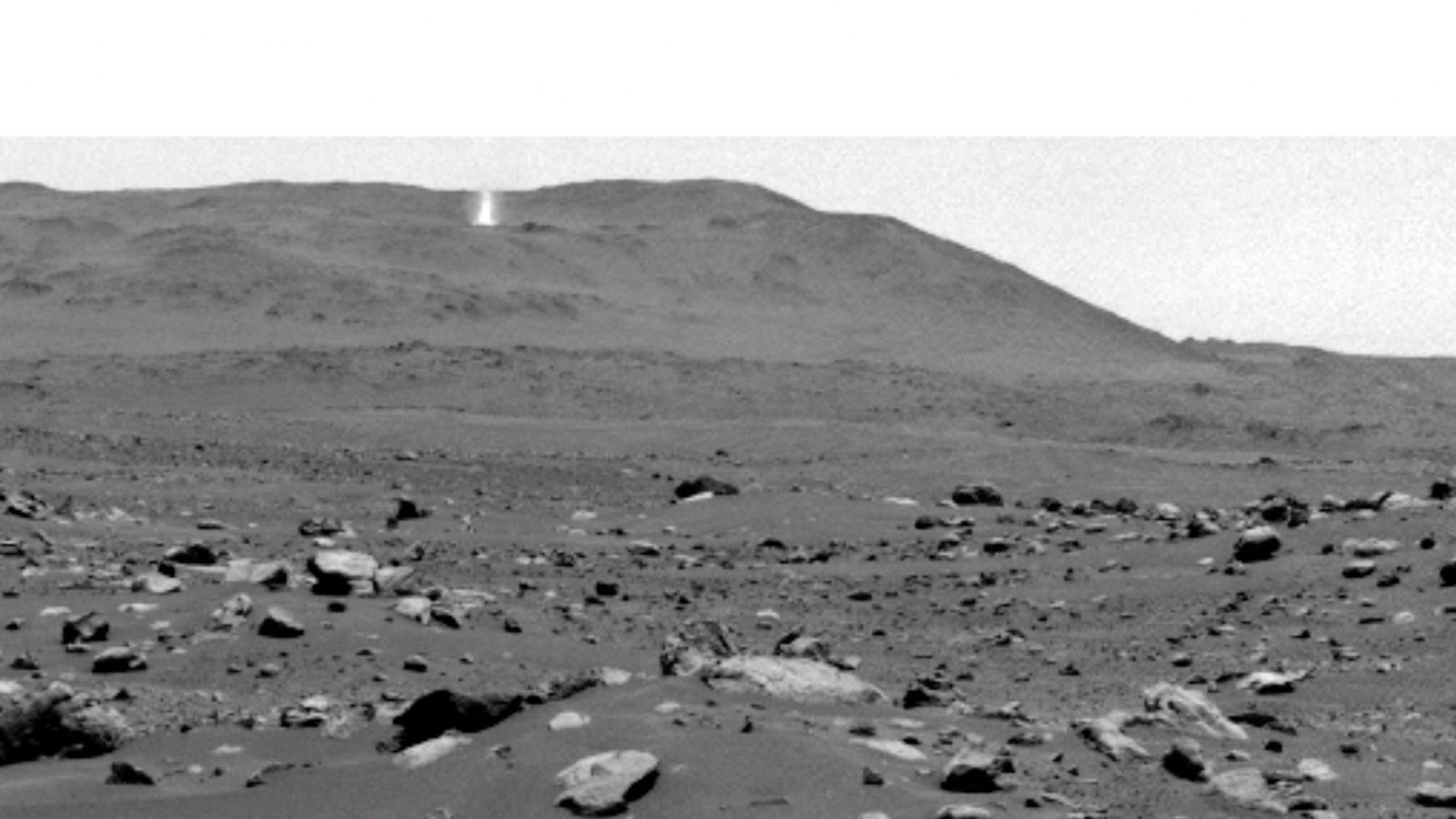NASA's Perseverance rover has given us a great look at a weather phenomenon that's very familiar to folks who live in desert regions here on Earth.
The car-sized Perseverance captured video of a dust devil swirling on the western rim of Mars' Jezero Crater on Aug. 30, 2023.
Mission team members calculated that the little twister was about 2.5 miles (4 kilometers) from Perseverance at the time and moving east to west at about 12 mph (19 kph). They determined it to be roughly 200 feet (60 meters) wide and got an estimated height on the object, too, even though its upper reaches are out of frame.
Related: Mars dust storm mysteries remain as scientists study the Red Planet

"We don’t see the top of the dust devil, but the shadow it throws gives us a good indication of its height," Perseverance science team member Mark Lemmon, a planetary scientist at the Space Science Institute in Boulder, Colorado, said in a statement.
"Most are vertical columns," Lemmon added. "If this dust devil were configured that way, its shadow would indicate it is about 1.2 miles (2 km) in height."
Perseverance captured 21 images of the dust devil using one of its navigation cameras. The mission team stitched those photos together to make the new video, which was sped up by a factor of 20.
Get the Space.com Newsletter
Breaking space news, the latest updates on rocket launches, skywatching events and more!
Perseverance landed on the floor of the 28-mile-wide (45 kilometers) Jezero in February 2021, on a mission to search for signs of past Mars life and collect and cache dozens of samples for future return to Earth.
Jezero is a great place to do such work, mission team members say, for the crater hosted a big lake and a river delta billions of years ago.
Perseverance has detected dozens of dust devils during its time on the Red Planet. In September 2021, for example, the rover captured audio of one of these whirlwinds — a first in the history of Mars exploration.
Perseverance's dust devil observations are helping scientists better understand Mars' atmosphere and improve their Red Planet weather models, NASA officials said in the same statement.
Join our Space Forums to keep talking space on the latest missions, night sky and more! And if you have a news tip, correction or comment, let us know at: community@space.com.

Michael Wall is a Senior Space Writer with Space.com and joined the team in 2010. He primarily covers exoplanets, spaceflight and military space, but has been known to dabble in the space art beat. His book about the search for alien life, "Out There," was published on Nov. 13, 2018. Before becoming a science writer, Michael worked as a herpetologist and wildlife biologist. He has a Ph.D. in evolutionary biology from the University of Sydney, Australia, a bachelor's degree from the University of Arizona, and a graduate certificate in science writing from the University of California, Santa Cruz. To find out what his latest project is, you can follow Michael on Twitter.









